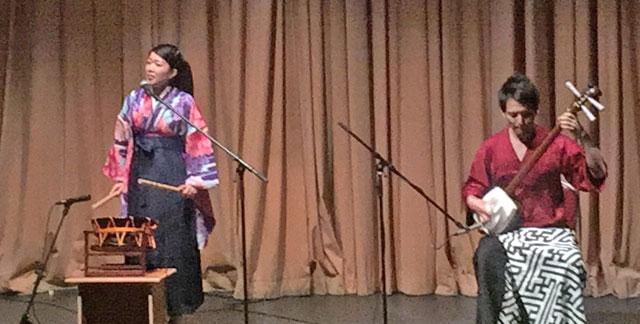You are here
The bolero, poetry and love put to song in Cuba and Mexico
By AFP - Dec 09,2023 - Last updated at Dec 09,2023

Street bolero singers serenade passersby on the seaside esplanade in Havana on December 4 (AFP photo)
HAVANA — As one of the greatest living exponents of romantic bolero music, 82-year-old Migdalia Hechavarria was thrilled on Tuesday to hear that UNESCO has recognised it as an intangible cultural heritage of humanity, calling the musical form “identity, emotion and poetry turned into song”.
There was little else for Hechavarria to do except break into song.
So she celebrated with an old bolero standard, “Me faltabas tu”.
“I sing it a cappella, I sing it with a tumba [drum], but always my bolero,” she tells AFP at her home, because “it is the music that makes you live.”
With a voice that delights, Hechavarria has taken bolero around the world, singing with such stars as Omara Portuondo and the late Celia Cruz, Elena Burke, Cesar Portillo and Ignacio Villa (Bola de Nieve).
“Bolero is a feeling. It’s a soft, sweet thing, for people to enjoy, for those who want to fall in love, to fall in love, for those who want to kiss, to kiss,” adds Hechavarría, who has been singing for 25 years at the Gato Tuerto, a bolero bastion in Havana.
UNESCO on Tuesday said bolero combines European poetic style with African rhythms and sentiments of native Americans, with songs passed down within families.
On an island with genres such as Cuban son and rumba, singers also live and breathe bolero — often on street corners for the enjoyment of passersby.
Drummer Pedro Luis Carrillo, 52, has been singing boleros on Havana’s seaside esplanade for 30 years, and still admits surprise that the “wonderful music” enthuses tourists.
Cuban and Mexican
As a musical form, bolero was born in Santiago in south-eastern Cuba at the end of the 19th century, and later took root as well in all of Mexico.
The candidacy of bolero as intangible heritage of humanity was presented jointly by Cuba and Mexico, which called it “an indispensable element of the sentimental song of Latin America”.
In a popular bar in Mexico City, Jose Antonio Ferrari, 72 years old and half-a-century singing boleros, performs “Sabor a mí.”
“The bolero is the soundtrack that moves the sensations and the most intimate fibers of the human being,” he tells AFP.
In 1932 Consuelo Velazquez, known popularly as Consuelito, performed “Besame mucho”, a song about unrequited love later sung by such luminaries as Nat King Cole, Frank Sinatra and the Beatles.
The golden age of Mexican cinema was also key in the diffusion of the genre, with interpretations by the legendary Pedro Infante, while Cuban bolero singers like Benny More and Rita Montaner made their careers in Mexico.
‘As long as love exists’
The Mexicano singer Jose Jose, known as the nation’s romantic voice, played Alvaro Carrillo, author of the bolero classic “Sabor a mi”, in a movie of that name, and his compatriot composer Armando Manzanero played a key role in the albums of popular singer Luis Miguel that won two Grammys.
Since 1987, Cuba has organised the Golden Bolero Festival to promote the genre. In 2001, nearly 600 bolero singers from Cuba and abroad sang for 76 consecutive hours at the festival in what was billed as “the longest bolero in the world”.
Ferrari says that in Mexico, just as in Cuba, most bolero singers are over age 60 and must compete with lots of other musical styles in bars and cantinas.
Even so, he is confident that “as long as love and heartbreak exist, there will be beautiful things like the bolero”.
Related Articles
Cubans hoping to snap up imported cars last week after the relaxation of restrictions dating back half a century had a shock with prices way out the reach of anyone but the elite.
AMMAN — Seeking to spread Japan's traditional and folk music around the world, and promote intercultural dialogue through singing and playin
CAIRO — Standing before a rapt crowd, Ahmed Adel oozes charm with his passionate performance of an Egyptian classic, evoking a romant



















